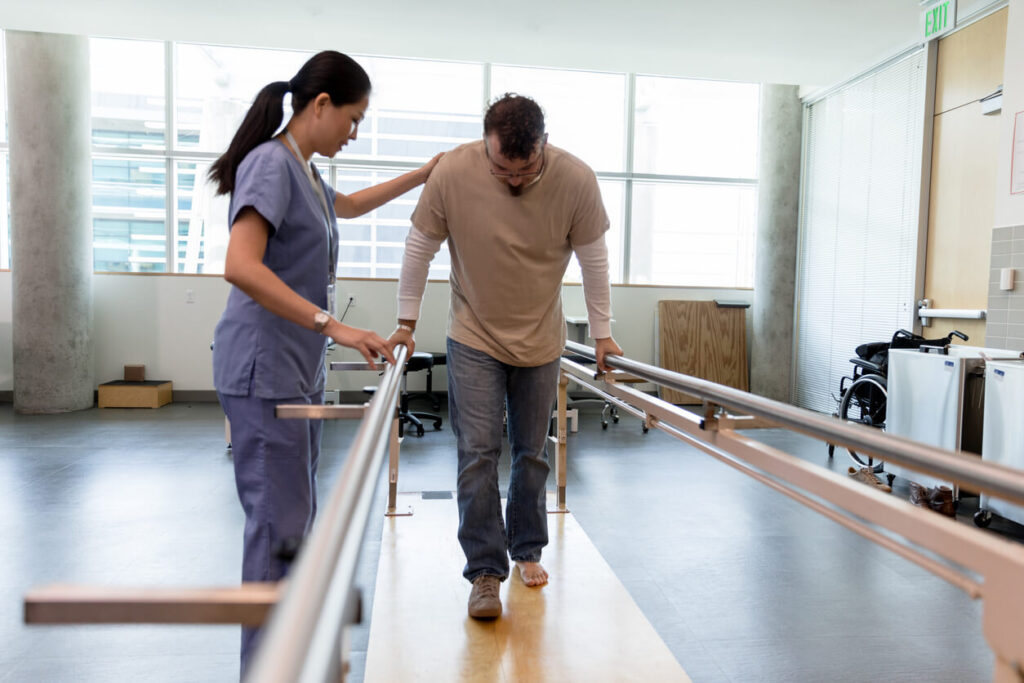In the case of injuries, be it sports, accidents, or daily life, the recovery does not begin and end with rest. Correct training, organized workouts, and specific treatment are needed to restore every working level and avoid complications in the future. This is where an injury rehabilitation clinic plays a vital role. The clinics are geared towards assisting individuals to recuperate safely and effectively with the help of manual therapy, exercise protocols and patient education to aid them in maintaining long term health.
What Is an Injury Rehabilitation Clinic?
An injury rehabilitation clinic is a specialized facility designed to treat and manage musculoskeletal injuries. This is aimed at the alleviation of pain, revival of movement and fortification of the body following strain, surgery or trauma. Physiotherapists, sports therapists, and manual therapy experts are rehabilitation professionals who collaborate to develop personalized recovery programs based on the condition and the level of activity of the specific person.
The injuries that are normally treated are muscle strains, ligament tears, joint pains, back or neck pain and post-surgical. These clinics have structured programs that help in the treatment of the symptoms as well as the underlying causes of either a competitive athlete or a person who got injured during the normal movement.
The Rehabilitation Process
At an injury rehabilitation clinic, treatment usually begins with a thorough assessment. To find out the cause of the injury, the therapist assesses your injury, movement patterns, strength and flexibility. This preliminary evaluation is accompanied by an individualized plan that could consist of:
Manual therapy: Physical therapy such as joint mobilization, soft-tissue release and massage to ease pain and enhance movement.
Exercise therapy: Routine stretching and strengthening exercises that aid in restoring muscle stability and co-ordination.
Biomechanical analysis: Evaluating the movement of your body to determine any imbalances which could cause recurrent injury.
Education & prevention: Education on appropriate movement techniques, position, and recovery measures to reduce the recurrence.
Rehabilitation involves each step as progressive- beginning with pain management then progressing on to mobility restoration and finally, functional training which initiates the body to normal activity or sport-specific needs.
What is the Reason to prefer a Professional Rehabilitation Approach.
The rehabilitation process without proper guidance may result in a partial healing process, compensatory movement patterns or re-injury. An injury rehabilitation clinic provides structured supervision, ensuring each stage of recovery happens safely.
Key benefits include:
Individual treatment – There is no injury like the other and no body like the other. Clinics create strategies which change with recovery.
Multidisciplinary experience – The possibility of access to professionals trained in the field of physiotherapy, sports therapy, and biomechanics will provide a complete care.
Quick healing – Exercises and practical therapy will stimulate the blood flow, decrease stiffness, and increase tissue regeneration.
Injury prevention – Clinics do not only treat existing problems, but also educate people on prevention by means of strengthening and educating.
Movement confidence – Strengthening and functional return through supervision assists in re-building confidence and eliminates fear of re-injury.
Who Benefits from Visiting an Injury Rehabilitation Clinic
The idea that rehabilitation clinics are meant strictly to deal with athletes is a myth. As a matter of fact they do benefit a large group of people, including:
Office workers that are affected by posture tension or repetitive strain.
The elderly who have fallen or have stiffened joints.
Patients that require organized movement re-training after surgery.
Sports people who treat sprains, muscle tear or overuse injuries.
Athletes were preoccupied with the notion of safely recovering the lost performance.
No matter the cause, the structured approach of an injury rehabilitation clinic ensures that recovery addresses the whole body, not just the injured area.
Medical Rehabilitation as a part of Healthy Lifestyle.
Rehabilitation does not cease as soon as the pain is removed. Strength and flexibility in the long run are essential in preventing injuries. To keep track of the progress, many clinics underline the importance of constant maintenance, regular stretching, strength training, and regular check-ups to avoid relapse.
Rehabilitation can also be complemented with other methods like deep tissue massage, mobility work or orthotic support to ensure improved recovery. The aim is not to cure but to become resilient and have functional health in the years to come.
Final Thoughts
An injury rehabilitation clinic provides more than pain relief–it offers a guided pathway back to movement, confidence, and strength. These clinics contribute to safe and effective recovery of people after injuries by using expert evaluation, evidence-based methods, and personalized care. Whether you are back in sport, back at work, or back to daily activity, a structured rehabilitation period is what provides a complete, balanced and sustained healing period.



